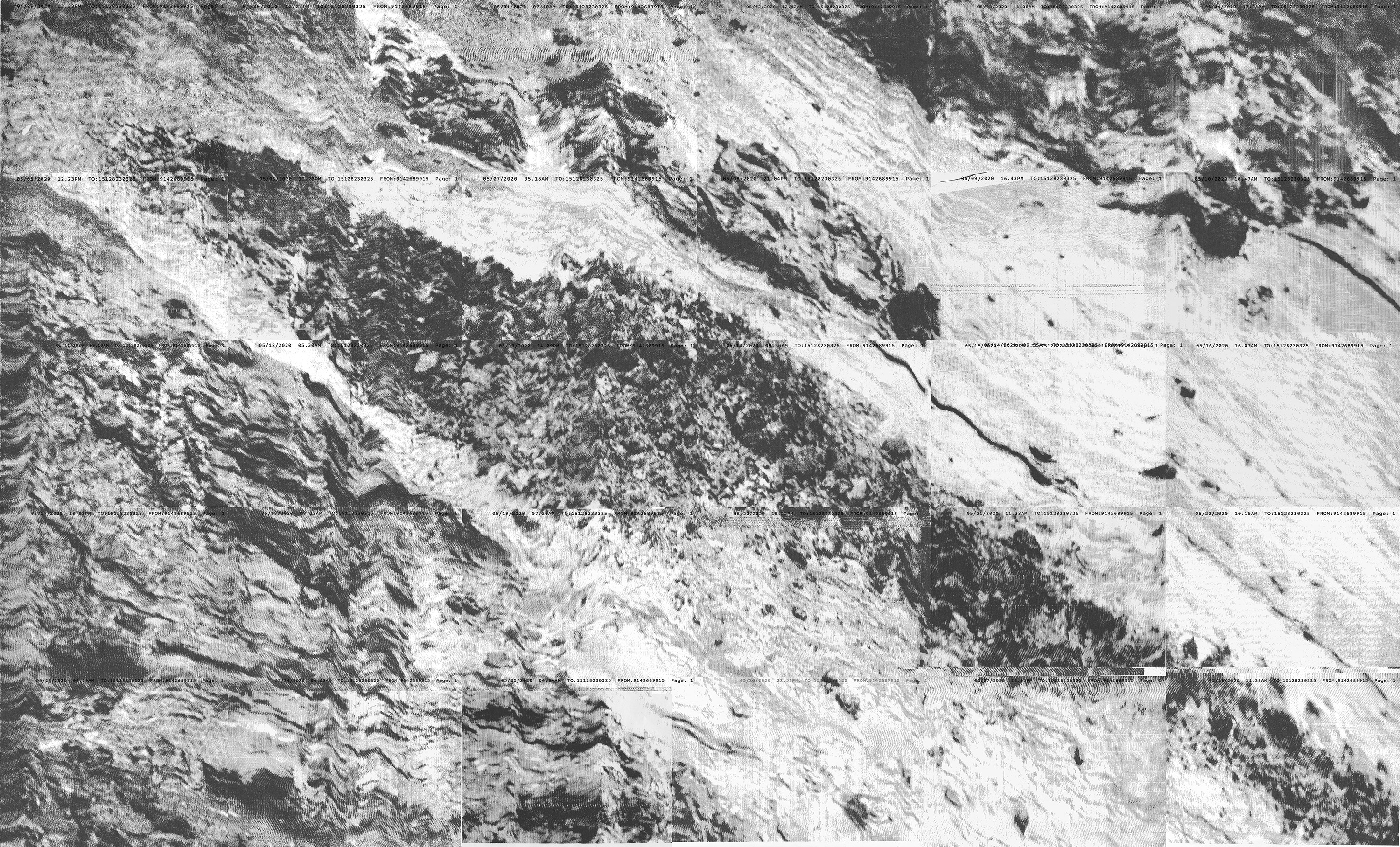
Silver_Page_Radio_Light
In late April, Austin-based photographer, Barry Stone, and New York-based photographer, Lucy Helton began faxing each other an image a day. A form of transmission and exchange, the project created a way to collaborate from home. When they started, the United States was in quarantine, in the throes of the height of Covid19. When it ended, in late May, the country was on the precipice of a revolution, demanding that Black lives matter. It might be difficult, at first, to trace such turbulence in this exchange. Stone’s more defined images of landscapes and fragments of works of art contrast with Helton’s blurred and hazy lines, textures seemingly from some far off planet. Her title list at the end of the exhibition, however, makes clear that each work is named after a headline of the day, indicating the urgency of the moment, the fraught and heightened nature of our daily news.
The tension between the images, the headlines, and the everyday realities of living in our current time is what guides this project which is informed by MoMA’s landmark 1970s exhibition, Information. That show featured artists like Vito Acconci who had his mail delivered to the museum. Joseph Kosuth’s famous One and Three Chairsmade an appearance. A chair, the photograph of the chair, a definition of “chair.” The controversial exhibition eschewed ineffable experience and traditional aesthetics for a straight-forward presentation of the facts of our world.
Stone and Helton too avoid the romanticism of the medium, the sharpness of the photo now lost to the raster of the fax machine. Faint lines build up to create an altered image. Stone’s photos act as a kind of diary, tracing his daily life and travels, whereas Helton’s are parts of an even larger whole. When stitched together, her images create a high-res scan from a video found online depicting permafrost melting in Siberia. Stone’s photographs of his life in Texas and abroad are interrupted by Helton’s abstract yet urgent warnings: the news of the day amidst our global warming crisis. Read together, they create, according to Stone, an almost lyrical transformation: “The fax machine works by marking the paper via different dial tones. It’s basically a song that plays out over the wires.”
A call and response for sure, signs of life from across the country during what we’ve all decided to deem “these unprecedented times.” Kynaston McShine, the curator of Information, wrote in his catalog essay about the political upheaval occurring in 1970 domestically and abroad: “It may seem inappropriate, if not absurd, to get up in the morning, walk into a room, and apply dabs of paint from a little tube to a square of canvas.” Uncertain times call for creative, even radical solutions. Stone and Helton, in their way, have composed a signal, a song, a fax tone screech to mark a month in America we won’t soon forget.
Katie Geha, Director, Dodd Galleries